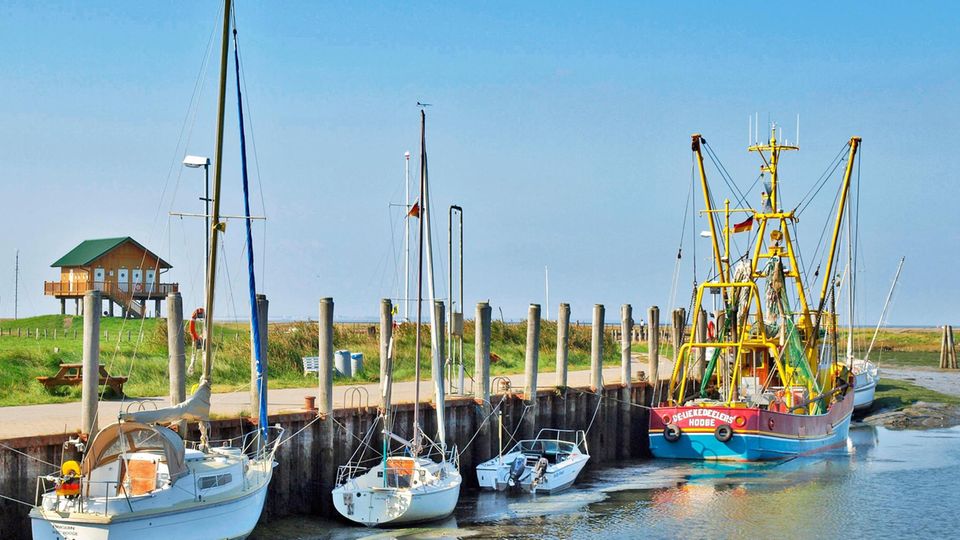If you’re looking for peace and quiet for a few days, Hooge is the right place for you. If you want to live there, you have to be able to endure the emptiness. An exploration.
By Andrea Ritter
This text comes from the stern archive and was first published in March 2018.
You can already tell the difference on the ferry: those who go to Hooge more often disappear below deck without a word. The others are worried.
Groups or school classes can go on holiday undisturbed at the Volkertswarft holiday farm
“Is this the right ship?” – “Our luggage is on this strange cart, is it really coming on board?” – “My cell phone has no network, can I still find the way?” Someone on the crew will answer all questions with “Joar,” which is a bit mean because a Nordic drawl like that doesn’t sound reassuring at all. So they stay outside for a while, keeping an eye on their luggage, route and Hallig folding plan, until the ferry leaves and the wind, that eternal North Sea wind, blows everything overboard. The plans and the worries about luggage, the questions and the desire for answers. The wind is loud, that The North Sea is silver-gray, it smells of diesel on deck. Maybe the tide is low, maybe the ferry is stuck. Maybe the crossing will take a few minutes longer or a few hours. One thing is certain: at some point you will arrive – and then we’ll see. This loose feeling is Hallig’s first gift to its visitors.
The mainland is 18 kilometers away and, depending on the weather, you can just about see it. Hooge is the second largest Hallig in the Wadden Sea after neighboring Langeness; 5.78 square kilometers of flat, treeless grassland in the middle of the North Sea. When you arrive at the ferry pier, you have the choice: you can walk along the embankment to the left or right, and after about three hours of walking you’ll be around. Straight away from the water the road leads to Hanswarft, the center of the Hallig, and conveniently to all the other human dwellings.

The crab fisherman’s cutter is also moored in the sailing harbor
© mauritius images
There are ten inhabited terps on Hooge, you can’t miss any of them: no matter where you stand, you can always see everything. The thatched houses that stand close together on the artificially raised hills. The yellow tarpaulins of the horse-drawn carts that transport tourists around in summer. The bird lovers with their sturdy telescopes. The green and red windbreakers of the day guests on the way to coffee and cake in the “Blauer Pesel” inn. And a little further away on the stone dam are the loners who are here for exactly that reason: walking alone. Look at the sea. Let’s see.

